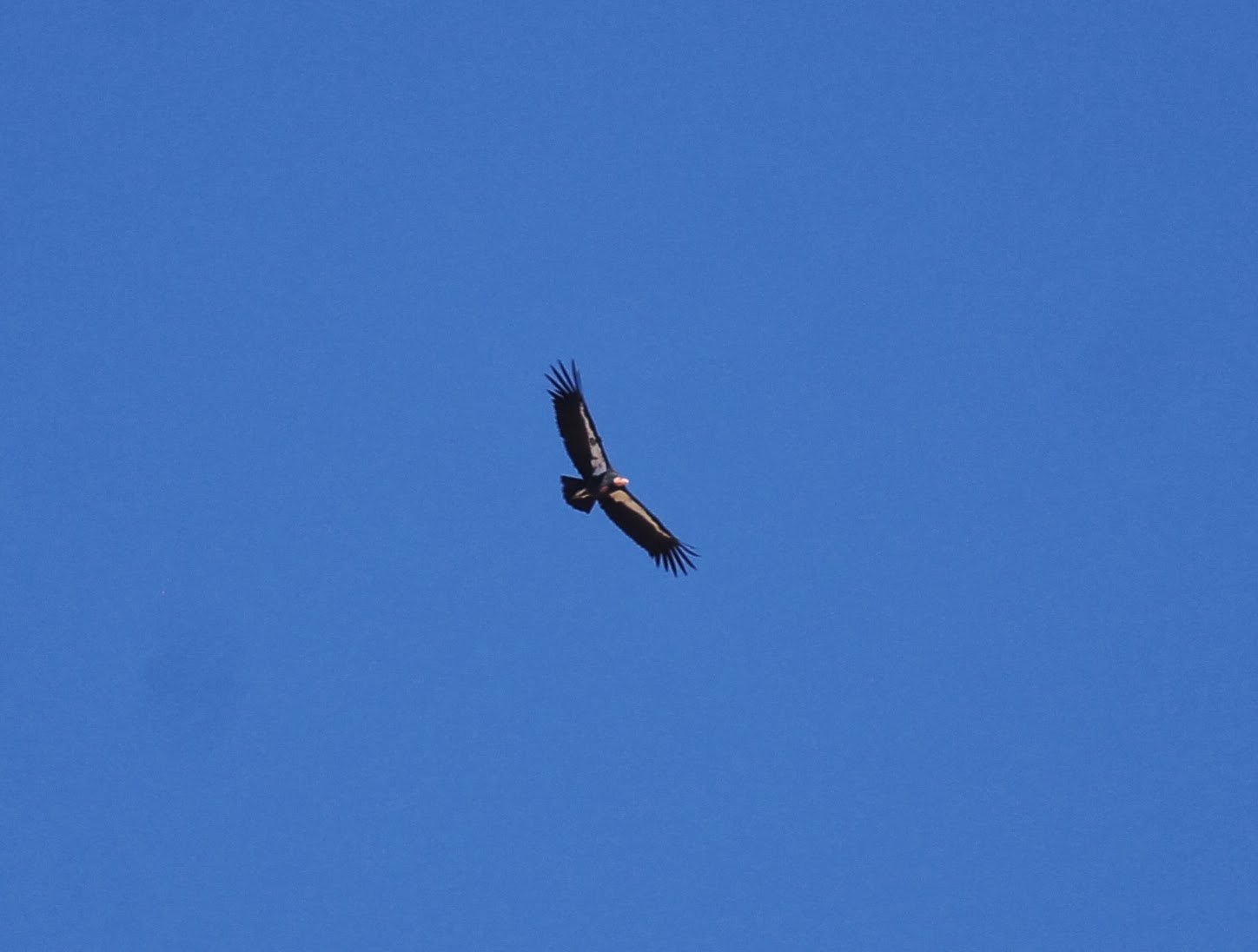Place: Montaña de Oro State Park, Los Osos, California
Length: about 2 miles
Coordinates: 35.272858, -120.888755
Difficulty: easy
We had just returned from a busy road trip to Southern California and Grandma Quail was due to go home a day after Labor Day. It was the first Labor Day weekend in a long while that we didn't have any travel plans for.
So we traveled without making any plans :-)
Going to Morro Bay on Labor Day weekend without a plan means getting the last available hotel room for the most outrageous rate. Camp sites were not available at all. We nevertheless, we went there and had a wonderful time.
On this visit to Morro Bay, we dedicated a full day to hike in Montaña de Oro State Park, just south of Morro Bay. We arrived there by late morning, and had some time for the low tide so we hung around the visit center and appreciated the wind-swept cypresses,
and their dwellers.
 |
| Turkey Vulture stretching out |
 |
| Montaña de Oro beach |
 |
| Bluff Trail - the loop we did labeled yellow. Map segment scanned from MdO SP brochure. |
The trail meanders along the cliff line and through a thick coastal scrub. The bushes were coated with spider webs off which hung their webbed lairs, decorated with plant debris and hulled insects.
The coastline of California is considered one of the most beautiful in the world. I admit I didn't see too many world coastlines to be able to compare but even so, I agree all heartedly with that statement.
 |
| Montaña de Oro coastline |
Every now and then I had the opportunity to step down below the cliff and get closer to the water for a different point of view.
The sound of waves lapping at the shore is one of my favorite sounds of Nature. I truly regretted not having camped there on this trip. Perhaps next time.
On top of the cliffs, decorating the gray scrub, some yellow late summer bloom.
 |
| Seaside Wooly Sunflower (Eriophyllum staechadifolium) |
 |
| Morro Rock |
 |
| Tide-pooling |
 |
| Pacific Brown Pelicans in formation over the ocean, across from the tide pools |
 |
| Algae in the air |
 |
| How many algae can you see? |
 |
| Mussels shut themselves against dryness |
 |
| Hermit Crab |
 |
| A tide pool |
Tide-pooling, or observing the wildlife in the tide pools is one of the best activities I can think of for nature-loving children.
 |
| The skeleton of a sea urchin |
 |
| Aggregating Anemone |
 |
| Starfish (Pisaster ochraceus) |
Occasionally I lifted my head from the pools and looked about me. The ocean, as always, carries its own beauty to the shore.
In the more protected area floated this western gull. As we sat down for lunch it approached us and became very insistent about being fed.
 |
| Western Gull |
 |
| Cormorants on a rock near the tide pools area |
Luckily, they didn't bite. But they did make us finish our lunch in a hurry. Not yet ready to leave the tide pools we left our packs on the beach and continued exploring.
 |
| Rock Crab peeking from its hiding place |
 |
| I'm a cancer too. Whatever that means. |
Time doesn't stand still and the tide reversed itself. By the time we started thinking about going on with our hike most of the pools were already reclaimed by the ocean.
We went back to the Bluff Trail and continued our loop, in view of the hills.
Papa Quail, as always, was after the birds. There were plenty of them in the scrub, but none too yielding. Still, he got some.
 |
| California Towhee |
I was satisfied with photographing flowers,
 |
| California poppy entertaining a visitor |
 |
| Damselfly |
Man thanks to members of the California Wildlife Appreciators for their help in identifying the animals!








































